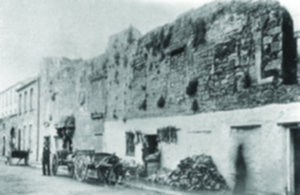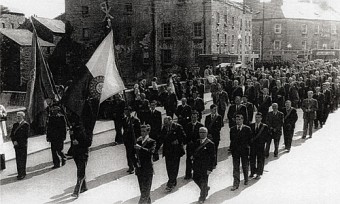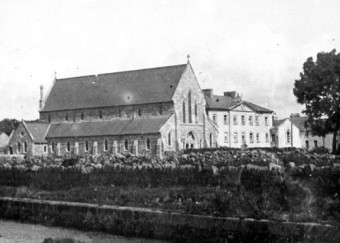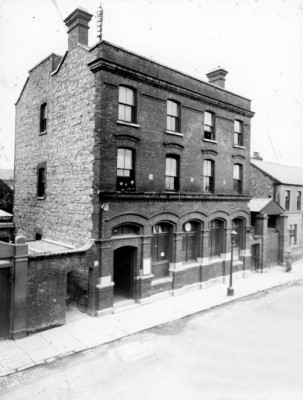Search Results for 'Galway Archaeological and Historical Society'
58 results found.
Market Street, one hundred years ago

The title of this photograph is ‘Old Building, Market Street’ and it was taken about 100 years ago. The building in the foreground was at one time occupied by the Augustinian nuns who were based in Galway (where the Mechanics is today in Middle Street) before 1651. The last Augustinian nun to die in Ireland is buried in Forthill. These sisters formed part of the same Augustinian Order as the friars, as do their contemplative successors today in countries like Spain and Italy. Continuing persecutions and other historical pressures saw to the end of these nuns in Ireland, though some lingered on in Galway up to the middle of the 19th century.
Public talk on Roger Casement and the Irish language
Sir Roger Casement was famous for his humanitarianism and his patriotism, but less well known, was his interest in the Irish language.
The Scot behind the Dublin to Galway railway line
William Bald, the man who proposed the Dublin-Galway railway line and created still unrivalled maps of Mayo, will be the subject of a public lecture.
Public lecture on The Tribes of Galway
The term ‘The Tribes of Galway’ was originally a term of abuse coined by Cromwellian soldiers, but is now a title of honour for the 14 families who, in many ways, made Galway.
Sparks Rugby Football Club
The Connacht Junior Cup was donated by a man called Senior. He was Alfred Senior, professor of chemistry in UCG from 1891 to 1918. The cup was first played for in 1905, and as Ralph O’Gorman says in his wonderful book entitled Rugby in Connacht, the event always had a unique culture, it was competitive and unpredictable, and had a wide geographical spread of participating clubs.
Public lecture on Ireland and Spain in WWII
Almost 80 years after the end of WWII, Ireland still attracts condemnation for being neutrality during the conflict, despite its actual practice of covert Allied support.
Local historians ensure Galway’s cultural identity thrives
The work of five local historians have contributed enormously to the ‘cultural capital’ on which Galway’s vitality and identity continues to thrive, according to Gearóid Ó Tuathaigh, Professor of History at the National University of Ireland, Galway.
A procession on O’Brien’s Bridge

Our photograph today is of a group from the Sodality in the Jes being led by Bobby Molloy with the IHS flag. They are crossing O’Brien’s Bridge as part of the annual Procession of the Most Blessed Sacrament. Willy Forken is in front of the right hand row, and among the others are Johnny Holland and Johnny Whelan.
St Joseph’s Church

On this day, February 7, in the year 1886, St Joseph’s Church was consecrated. It was to be the main church of the Parish of Rahoon, which at that time extended from Corcullen to Furbo. There were already two chapels in the parish, one in Bushypark and one in Barna, and they served their own areas. For those parishioners living closer to the town, there was no designated church. Some would attend Mass in the chapel of the Presentation Convent, but it was not very large and worshippers often had to kneel on the ground outside, irrespective of the weather conditions. The parish had a big population and major annual events such as confirmation had to be moved to the Pro-Cathedral.
The General Post Office

Records show that post office business has been conducted in the Eglinton Street area since the 1850s. The Ordnance Survey map of 1872 shows the ‘Postal and Telegraph Office’ in the house at the corner of Francis Street and Daly’s Place, where Emerson & Conway solicitors are today. Prior to 1885, the local postmaster Mr Cornwall provided the premises but, as business expanded, the building became too small. It could not accommodate parcels and a separate outside premises for a parcel office was rented at a cost of £15 a year.

